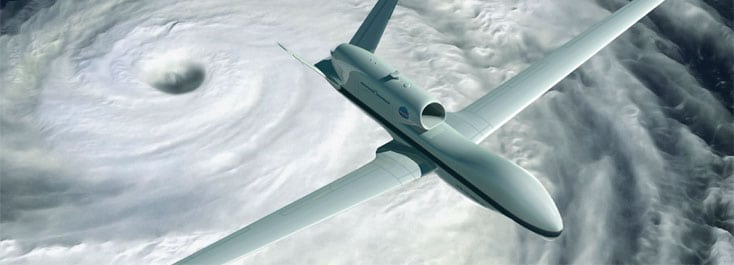[Avionics Today 07-29-2015] Northrop Grumman Chief Executive Officer Wesley Bush sees opportunity on the horizon in the military Unmanned Aircraft Systems (UAS) market. The company announced its second quarter 2015 earnings earlier today, predicting likely budget constraints in the coming year created by the Budget Control Act and possible further sequestration in 2016. Despite upcoming funding gaps, Bush spoke to the future of Northrop Grumman’s ongoing UAS initiatives as bright, and urged quicker integration into airspace for unmanned aircraft.
 |
| Northrop Grumman Global Hawk. Photo: Northrop Grumman |
“[UAS] is an important part of our growth, it’s an important part of our company, and I personally think we’re still at the early stages of understanding, collectively, a defense and security and perhaps even more broad perspective, how unmanned systems — and more autonomous systems — are over time going to play an increasing role in performing the missions that the nation and our allies need to perform,” Bush stated.
The company posted net earnings of $5.9 billion in sales, with $2.5 billion coming from the aerospace sector as a result of an increase in unmanned systems sales — an 11 percent increase over the same period last year. Northrop Grumman has been heavily active in developing and deploying UAS in the last few years. With a portfolio that touts several relatively new UAS the company has a lot to work with. These include the MQ-4C Triton UAS that aims to provide Intelligence, Surveillance and Reconnaissance (ISR) to the U.S. Navy over ocean and coastal regions, as well as the RQ-4 Global Hawk UAS, four of which The Republic of Korea Air Force ordered from the company earlier this year. Northrop Grumman and the U.S. Air Force will begin delivery of the aircraft alongside two ground stations in 2018.
“I see the [agreement for the Global Hawk in Korea] as a really important first step in the growth of unmanned for our allies,” said Bush, who noted that Japan has also made an announcement of interest in purchasing the Global Hawk. Other international parties, such as Australia and Germany, have expressed interest in Triton.
This rising interest in UAS is partially fueled by the climbing need for surveillance, according to Bush.
“The growing recognition that the surveillance needs are continuing to expand — it is not a linear expansion it is a higher rate than that — that those rates are continuing to expand to address all these challenges around the world really is a direct connect to the strength that unmanned can bring: The ability to operate with persistence; the ability to use the extra capacity of a platform by removing the need to support a human on it and replace it with mission capability,” said Bush.
As systems and capabilities continue to expand, Bush believes that both operating and development costs will continue to drop, making the aircraft more attractive for both foreign and domestic buyers.
“We’ll be able to bring down both the cost of creating these systems as well as the cost of operating these systems,” he said.
In the last few months the company has made strides toward upping operational utility for UAS, including the Autonomous Aerial Refueling (AAR) of U.S. Navy’s X-47B Unmanned Combat Air System Demonstration (UCAS-D) aircraft earlier this year. Alongside NASA, a Global Hawk UAS also successfully flew with a new Open Mission Systems (OMS) architecture just last month, demonstrating the ability to quickly and more affordably adapt new capabilities onto unmanned aircraft.
While the utility of unmanned systems are on the rise, government regulated integration into airspace in the U.S. still presents some barriers to the technology in the military arena as it does in the small UAS (sUAS) arena.
“I believe we’ve got a lot in front of us; where this will all go will be a mix of not only technology but also policy and operating doctrine. Sometimes those arenas are not as fast-paced as the technology is,” Bush noted. “We have to be thoughtful and recognize that there are a number of things that are going to pace it.”
The FAA has released a Notice of Proposed Rule Making (NPRM) for sUAS integration and, with the comment period closing in April, is now looking to issue a final rule in 2016. While the FAA has received much criticism for its slow integration of UAS in the National Airspace System (NAS), Bush still sees this as a significant indicator for the systems.
“The work that is being done in the U.S. in terms of airspace integration that the FAA has taken on is another signal of the importance of this class of technology,” he noted.
As the technology and the arena for unmanned aircraft continue to evolve, the CEO is looking to tread a careful path forward to continue generating revenue with the emerging tech.
“I’m excited about where this is going, our team is clearly excited. We are continuing to make sure that we are doing the right things to invest in this technology both in terms of its development capability but also in terms of our ability to produce it economically,” said Bush. “We see a bright future for unmanned systems.”